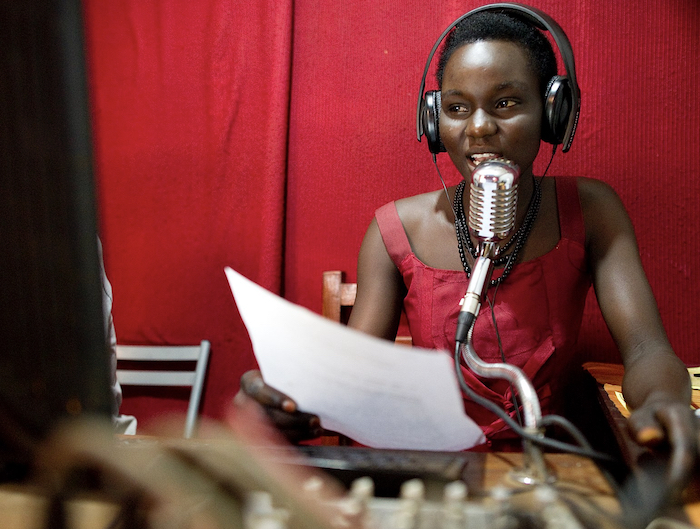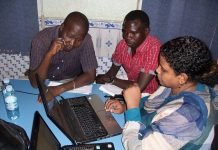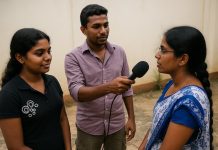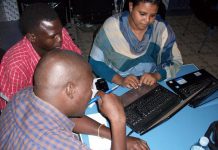
In this article we look at the steps involved in creating a news and current affairs programme based on the needs of the target audience.
Essentially, a radio news and current affairs programme has four main format types. These are:
- The interview
- This is where the presenter interviews someone in the news. It could be about the main story of the day.
- If it is the most important story this interview would take place immediately after the main news bulletin.
- It should be between around five minutes long, although this could be stretched to 10 depending on the seriousness of the topic.
- There will also be shorter interviews throughout the programme.
- The reporter package
- A package will be put together by a reporter or correspondent and will include a number of clips of people the journalist has interviewed.
- A package will typically be about three and a half minutes long and contain three or four clips.
- Each clip will be about 20 to 30 seconds long. The package can be pre-recorded or live.
- The two-way
- This is where the presenter interviews a reporter or correspondent covering a story.
- It is designed to tap into the journalist’s background knowledge of the story being covered and is sometimes used before a main interview.
- A two-way can vary from between 90 seconds to five minutes depending on the importance of the subject matter.
- It is different in tone from interviews with outside contributors.
- When the presenter is interviewing someone from outside on a big story, the tone will often be adversarial, pressing the interviewee on important points.
- In a two-way with a reporter, the presenter is simply trying to draw out the most important facts in a neutral tone.
- The vox pop
- This is a mix of clips from members of the public who are giving their reactions/opinions on a news story. This should be no longer than three minutes long.
- It should contain a variety of perspectives so that the audience can hear diverse opinions.
Structure of a current affairs programme
The main purpose of the show is to cover the news and get reaction to it. So the main ingredients are news bulletins, with interviews and longer reports about the individual news items.
There is more to it than that.
There will also be other information vital to the listener, including weather forecasts and sports news, plus perhaps business news, summaries of what is in the newspapers, programme trails for the rest of the network and so on.
These all need to fit together in a regular pattern, so that with familiarity, the listener gets to understand how the programme works. You can think of this as arranging the furniture of the show.
You will probably want your main news bulletins to happen on the hour, perhaps with summaries on the half hour. These are the first fixed points.
The weather and the sports news should also happen at exactly the same time each morning – just as they appear in the same place every day in a newspaper.
The audience likes predictability in the way the content is presented, so that they know when to tune in for the information in which they are most interested.
When you are happy with your programme structure, the task for the production team every day is to think about how the news stories and interviews fit in.
Running order
Every edition of the show works to a running order. A rough running order is produced at the very first programme meeting and then modified and updated as the day and the night develop.
The following is a rough outline for a two-hour-long radio news and current affairs programme.
| Programme running order | |
| Time | Item |
| 0700 | Welcome and news bulletin setting out the latest developments in the topics being covered in the programme |
| 0709 | Top story. This slot is typically used for exploring the top story of the day. The item might start with a two-way with a correspondent/reporter setting the scene. |
| 0711 | After the introduction, an interview, live or pre-recorded, with one of the main characters in the top story, or with an expert in the subject matter. |
| 0714 | Second story. An interview, two-way, vox pop or package on the second most important story of the day. |
| 0719 | Third story. An interview, two-way, vox pop or package on the third most important story of the day. |
| 0723 | Markets, finance news |
| 0726 | Sport news |
| 0728 | Weather |
| 0730 | New summary (including clips from the 0710 interview) |
| 0733 | Top financial story of the day |
| 0738 | Newspaper, broadcast, website, social media news review |
| 0742 | Light-hearted story |
| 0745 | Headlines |
| 0746 | Vox pop on top story of the day |
| 0752 | Fourth major story of the day |
| 0754 | Recap of the main stories of the day |
| 0758 | Preview of second hour |
| 0800 | News bulletin (including clips from the first half hour interviews) |
| 0810 | Second look at the top story starting with a short intro, a clip from the interview in the first hour and a new guest putting another perspective. |
| 0815 | Studio debate with invited guests to discuss the main story. |
| 0820 | Recap on secondary story either with a package, a two-way, a clip from the first hour, or a vox pop. |
| 0822 | Studio debate with invited guests to discuss the secondary story. |
| 0826 | Sport news |
| 0828 | Weather |
| 0830 | News summary (including clips from earlier live interviews) |
| 0832 | Return to the third top story of the day with an alternative perspective illustrated and introduced with clips from the first hour treatment. |
| 0836 | Newspaper, broadcast, website, social media news review |
| 0845 | Headlines |
| 0846 | Other news – a roundup of other stories circulating and highlighted in the previews newspaper, broadcast, website, social media news review. |
| 0850 | A look back on the programme including clips and the new angles explored. |
| 0855 | Financial update |
| 0857 | Preview of the topics being covered by the programme the following day. |
| 0900 | News bulletin made up of clips on the top stories of the day from the programme’s output. |
Exploiting content for maximum impact
Your production team should include at least one person monitoring the live output being produced by the programme.
This person is looking for newsworthy clips to package for the news summaries on the half hour and the main bulletins on the hour, and to illustrate live studio debates.
Your programme needs to be a breaking news production line, continually delivering original newsworthy clips.
This production role should also share all the breaking news clips from across all output and on all appropriate social media channels.
Creating a programme trailer
In order to attract new listeners, you need to create compelling programme trailers to advertise the material to be broadcast in the following morning’s programme.
This is essential, and has to be factored into the daily work pattern. The trailer must promote the main story of the day; the one in which you are planning to invest most resources.
Creating the sort of trailer that will stop people in their tracks and make them pay attention can help win over new listeners, introduce them to the subject matter to be covered on your programme, and, hopefully, encourage them to spread the word by mouth and social media.
A promo trailer should be around 30 seconds maximum, the shorter the better. You want to grab attention. Give the audience a snippet of what is coming up. You don’t want to give them too much, but just enough that they think “I must tune in tomorrow to hear more about that”.
And you want your trailer to be shareable on social media, so the better it is, the more chance it has of going viral. Ask yourself would you share the trailer with your friends? If not, work on it some more. And keep working on it until you think it has the quality to go viral.
Recipe for a good trailer
So how do you create an attention-grabbing radio trailer? Here are a few suggestions.
Encourage your reporter and producers to always be alert to an audio clip that sets out the scale of the issue, but doesn’t give the solution.
For example, you might be doing a story about the rural economy and how people are struggling to survive.
You will have interviewed farmers and villagers. One might say something along the lines of “I didn’t know how I would survive”. Such a quote will make the audience want to know what happened next. What did the interviewee do to survive? Could it be relevant to the listener’s own predicament?
That clip is less than five seconds long, yet it is likely to resonate with thousands of people in a similar position. Of course your piece will no doubt have examined the issues the farmers and villagers face, and you will probably have covered how they coped. But save that for the programme.
The next trick is to package that clip, and perhaps another, with a carefully crafted text that explains WHY people MUST tune in to your programme in order to learn more.
Calls to action
The wording is important.
You could use ‘calls to action’ where your trailer invites the audience to ‘listen’, ‘take part’, and ‘assess’.
Words that suggest drama work well, such as ‘revealed’, ‘for the first time’, ‘life and death decision’.
But you must remain honest. You are in the business of facts not fiction. Never exaggerate.
Another benefit of trailers is that it could encourage your competition, both broadcast and print, to tune in so they can follow up your story. And that’s a good thing. You want them to be following your lead, you want to be known as the station that sets the news agenda. Because by the time they have heard your news item you will have already moved the topic by inviting guests to respond live on-air.
Because trailers should be part of your daily output, you should probably consider creating a template so that it can be used every day.
Something like:
“In tomorrow’s morning programme we will be looking at (here you can mention up to three items), and we will be talking to xxxx about xxxx (insert short clip here).”








